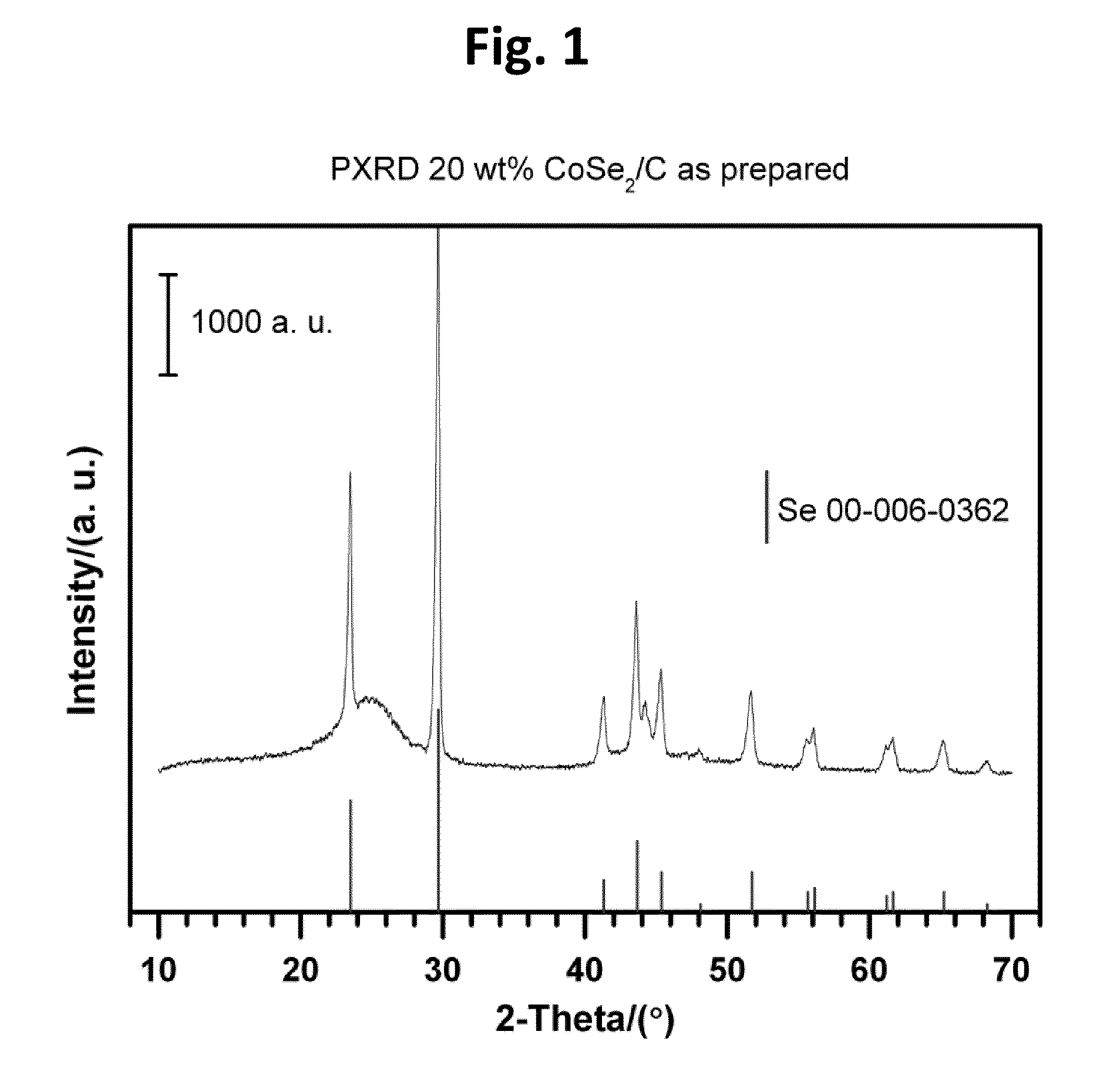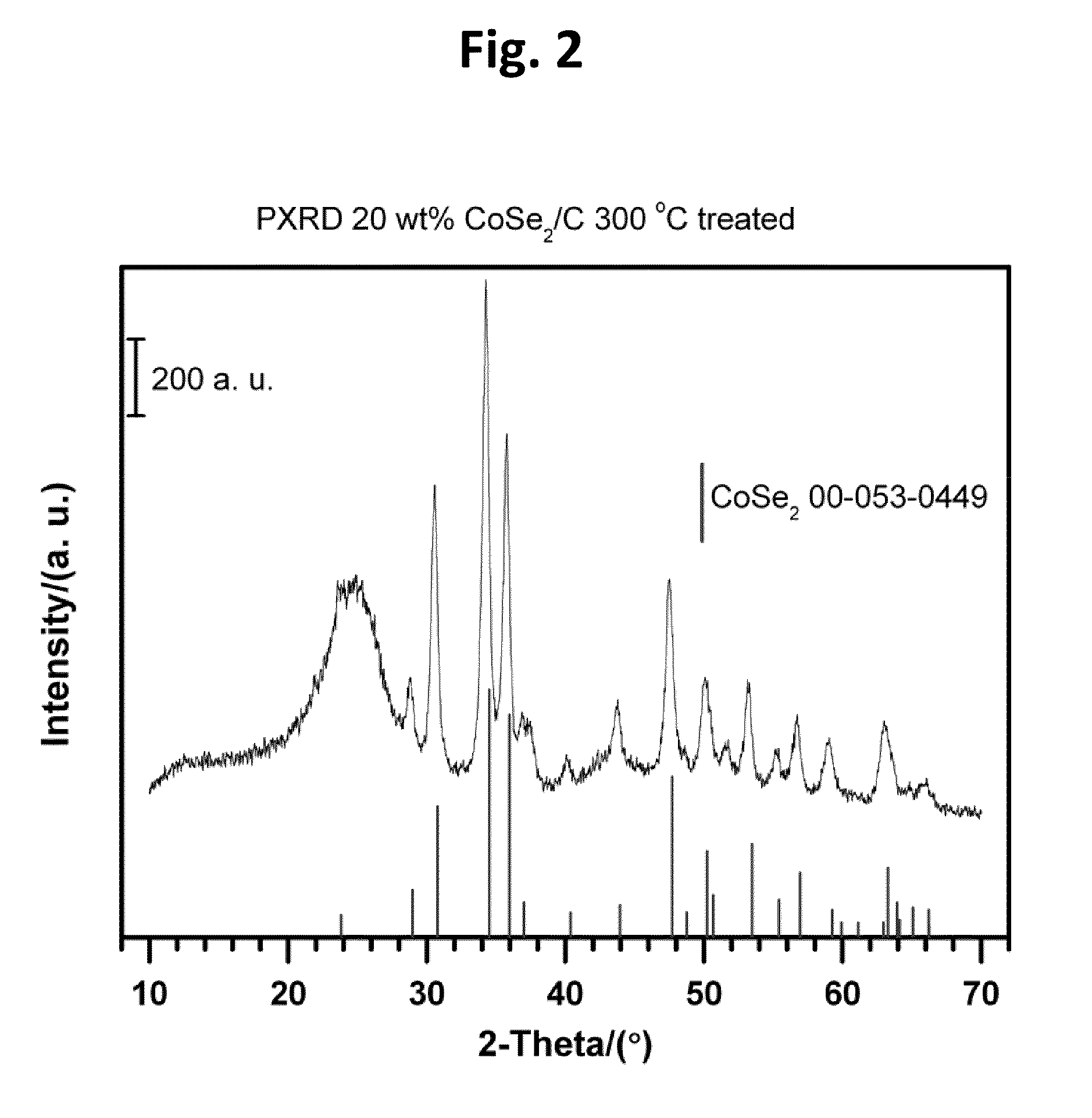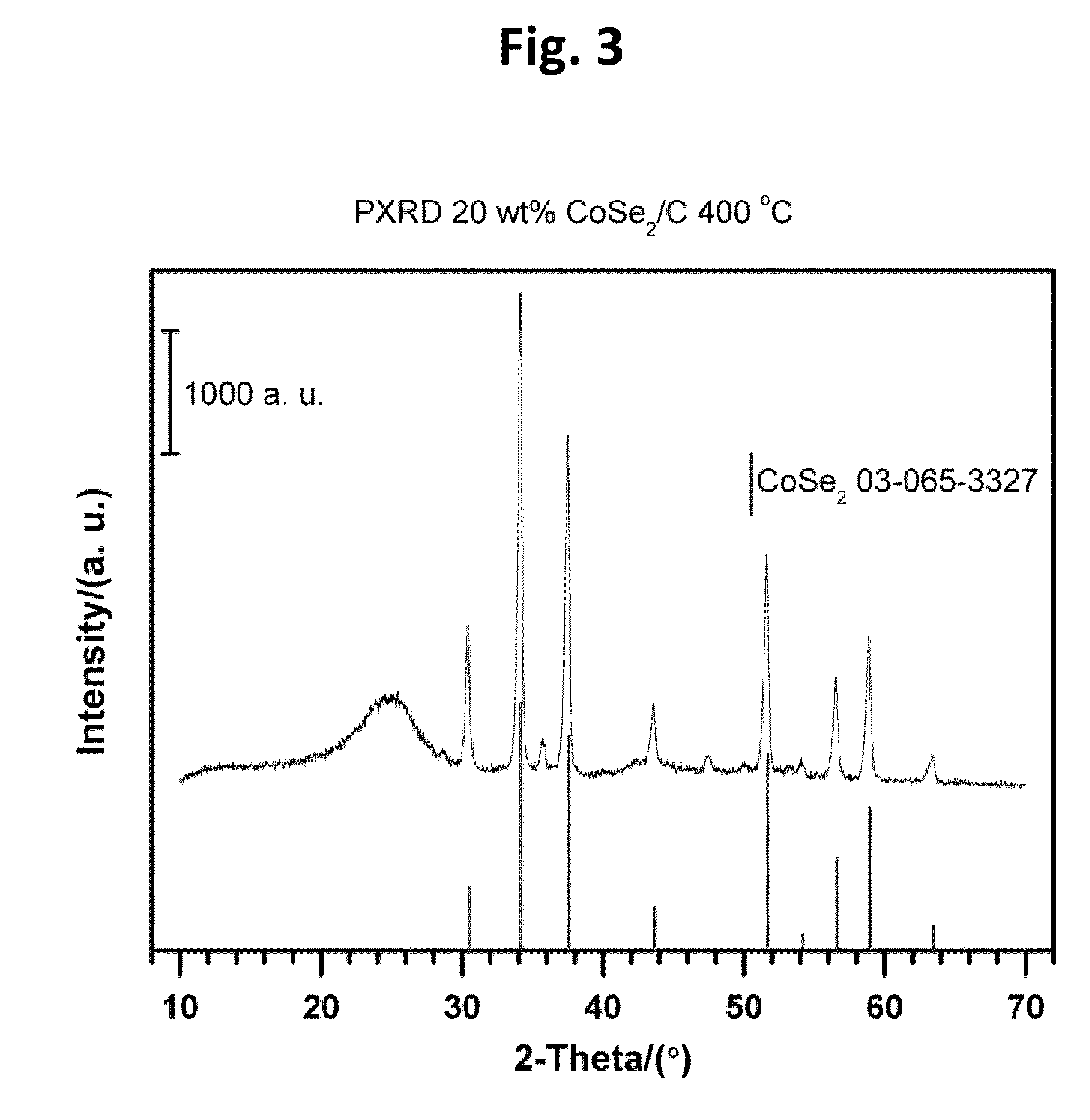CARBON-SUPPORTED CoSe2 NANOPARTICLES FOR OXYGEN REDUCTION AND HYDROGEN EVOLUTION IN ACIDIC ENVIRONMENTS
- Summary
- Abstract
- Description
- Claims
- Application Information
AI Technical Summary
Benefits of technology
Problems solved by technology
Method used
Image
Examples
examples
Experimental
[0053]All the chemicals, except for carbon substrate, were used as received from Aldrich-Sigma, Alfa Aesar and Merck companies without any further purification. The carbon substrate was derived from Vulcan XC-72 carbon received from CABOT Co. by activating at 400° C. under a high purity nitrogen atmosphere for 4 hours before being used. Milli-Q Water (18 MΩ·cm) was used during the electrochemical measurements.
In Situ Surfactant Free Synthesis of CoSe2 Nanoparticles on Carbon Substrate
[0054]Carbon-supported CoSe2 nanoparticles (20 wt. %) were synthesized by an in situ surfactant free method with heating to reflux temperatures. A typical preparation route according to the present teachings, can begin with 0.135 g Co2(CO)8 (0.395 mmol) and 0.68 g carbon (Vulcan XC-72) being dispersed in 10 mL p-xylene under vigorous stirring and nitrogen atmosphere at room temperature for 30 min. Then, the mixture suspension can be heated to reflux. Subsequently, the suspension can be coole...
PUM
| Property | Measurement | Unit |
|---|---|---|
| Temperature | aaaaa | aaaaa |
| Temperature | aaaaa | aaaaa |
| Temperature | aaaaa | aaaaa |
Abstract
Description
Claims
Application Information
 Login to View More
Login to View More - R&D
- Intellectual Property
- Life Sciences
- Materials
- Tech Scout
- Unparalleled Data Quality
- Higher Quality Content
- 60% Fewer Hallucinations
Browse by: Latest US Patents, China's latest patents, Technical Efficacy Thesaurus, Application Domain, Technology Topic, Popular Technical Reports.
© 2025 PatSnap. All rights reserved.Legal|Privacy policy|Modern Slavery Act Transparency Statement|Sitemap|About US| Contact US: help@patsnap.com



